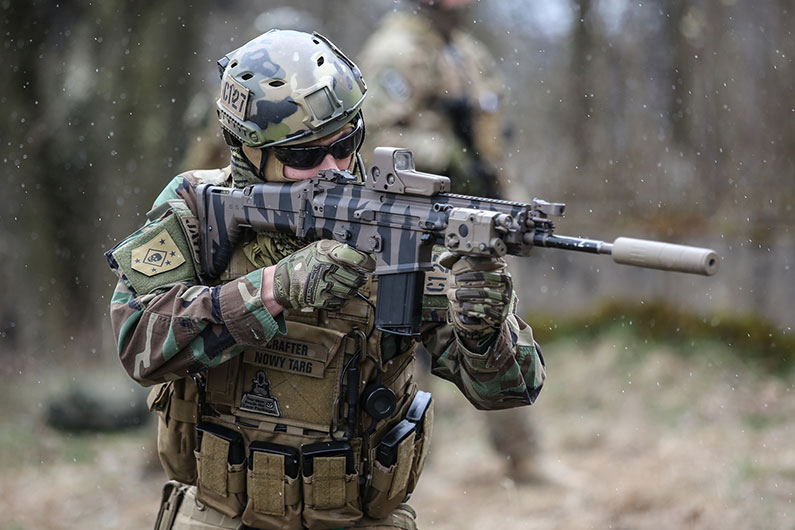When asked the question “how long does spray paint last on a firearm?” you’d be hard-pushed to find anyone that can give you a fixed time frame.
If you’re out in the elements on a daily basis with your gun, then chances are that the coating is not going to last forever. However, if you keep it locked away and hardly ever use it, then the paint job could last you in excess of twenty years.
To prolong your gun’s paint job as long as possible — and to save both time and money — let’s investigate the main culprits that contribute to a shoddy, short-lived paint job. Additionally, I’ve included some tips and tricks to extend the gun’s finish and help you avoid destroying your labor of love.
Reasons Your Firearm Coatings Don’t Last
There are many reasons a spray painted coating doesn’t stick to a firearm as long as it should. For example, perhaps you’re not using the correct paint for the job, or the surface was ill-prepared. Many coatings on the market are simply not designed for use on alloy surfaces. As your gun is predominantly metal, your chosen paint needs to be compatible. War games can be a blast when playing in harsh conditions like snow, wind, and rain. They make the whole scenario feel truly authentic and add to the experience and thrill. Unfortunately, your firearm won’t appreciate it quite as much. If you’ve done a bit of a botch job with an aerosol spray and haven’t sealed the coating — i.e. there are gaps underneath where moisture can creep in — the paint will be prone to flaking.
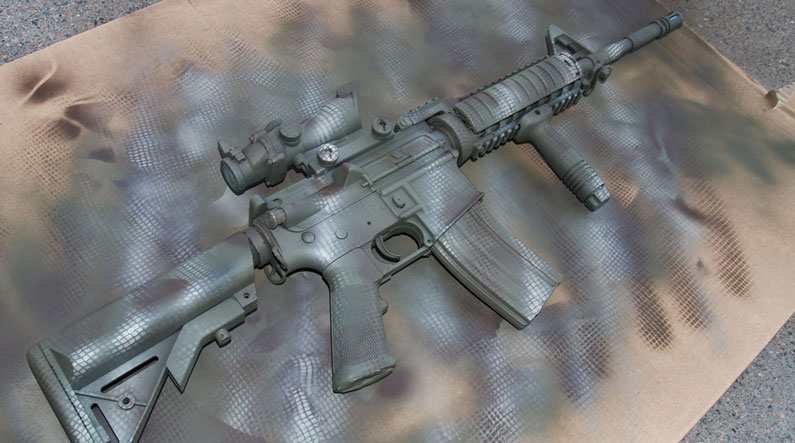
How To Make Your Firearm’s Paint Job Last Longer
Now we’ve established the enemies of a good paint job, let’s look at how to make your hard work last longer.
Choose a Quality Paint
Sure, you’ll find budget aerosol paint sprays specifically designed for firearms. But a quality paint job is one of those things where you really need to speculate to accumulate. Choose a quality coating that’s compatible with use on alloy surfaces — even if it’s more expensive than you would like! If you’re not sure where to start given the wide variety of firearm paint available, try my top recommendation, the LCW DuraCoat DC44 coating, which comes complete with a hardener. Additionally, the matte effect will help keep you in stealth mode as sunlight won’t reflect off the surface. Another great solution for a camouflaged device is Majic Paints Olive Drab 8-0850-2. The constituents of this coating inhibit rust, provide a level of water resistance, and blend in well with any foliage background.
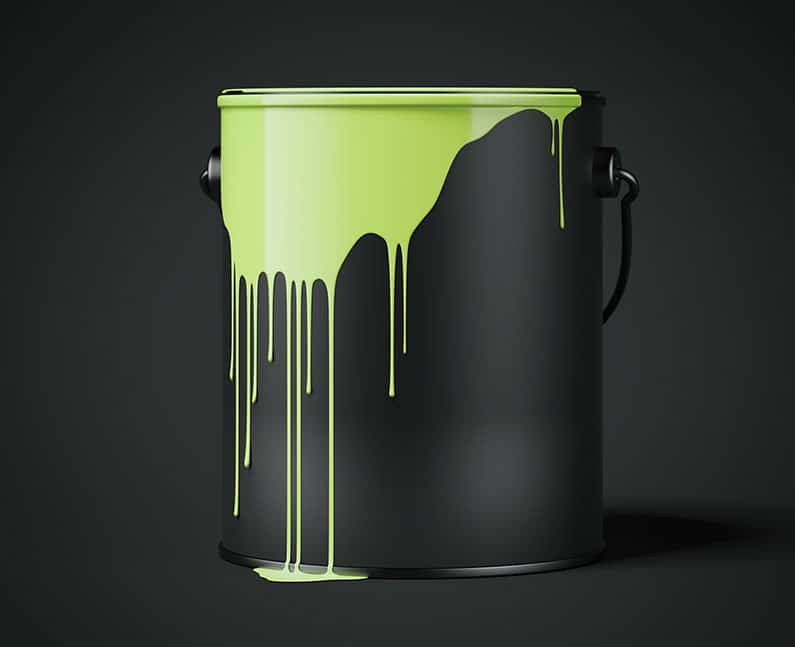
Use the Right Tool for the Task
Now we’ve discussed coatings, let’s look at the best way to apply them. You’ll notice many aerosol spray gun options available. You’ll also notice that I’m not a big fan of these. My dislike is not unfounded as they simply lack the control other devices offer. There are no fixed settings and quite a bit of guesswork related to medium output and pattern. So what are the other options? You could go down the traditional path of using a paintbrush, but then your final finish ends up with ugly brush strokes — it is also tricky to achieve a consistent finish with this tool. My implement of choice is a paint sprayer. These machines offer complete control when it comes to coating output and fan pattern size, they also offer rapid results so you achieve excellent results fast. If you look at devices available on the market, you’ll see that HVLP spray guns are probably the best choice for this type of project. Sprayers such as the Wagner FLEXiO 3000 arrive with a suitably sized fluid nozzle and also combat dreaded overspray so more coating goes where you plan. Of course, there are always exceptions to the rule, and this is the case with the airless Graco Ultra handheld cordless device. While many airless sprayers will run at too high a pressure for this size task, this particular unit offers the grunt of a larger machine but with the fine control of a standard spray gun. It can also handle the viscous coatings required when revamping your firearm.
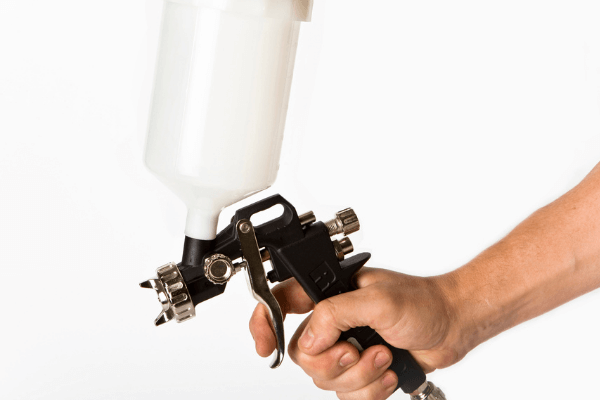
Prepare the Firearm Properly
Like any painting job, good preparation of your base makes all the difference to the final finish. This needs to start with cleaning. If you try to apply paint to a greasy or dirty surface, it’s just going to slide right off. Wipe down the surface of the firearm with a lint-free cloth and acetone (or another solvent cleaner) in the case of metal and use 99-percent isopropyl alcohol on any plastic components. The next step is to create a slightly rough surface so that the coating will adhere properly. Then wipe the dust away so that you have a pristine exterior ready for the base coat. If you’re an airsofter looking to refashion your shooter, read up on how to paint an Airsoft gun for a full rundown.
Allow the Paint to Cure Fully
Once you are satisfied with your coating, allow it to cure completely before taking it into the field. Some paint manufacturers advise that their paint will dry in as little as 15 minutes, however, this does not necessarily mean that it is fully cured — perhaps it’s only just dry enough to handle or apply a consecutive coat. To ensure the paint can withstand the rigmarole of regular use, be sure that the coating is 100 percent dry before you use the firearm. For the most part, this happens within two weeks, but check the paint manufacturer’s website for more details.
Clean Thoroughly After Use
Hopefully, you’re completing this action already as you should be cleaning your firearm thoroughly after every use. Your favorite shooter is probably a fairly expensive item, so you want to prevent any damage to the internals. This process ensures that your device fires efficiently in the future, keeps you safe, and can increase the lifetime of your paint job. Which ultimately keeps you inconspicuous while shooting.
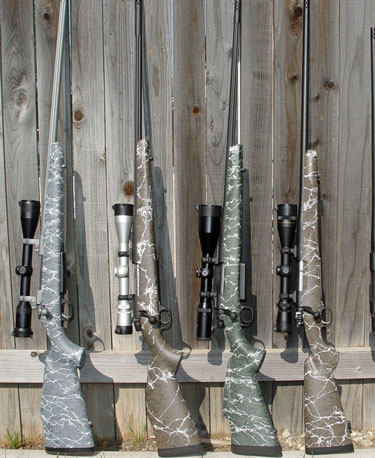
Conclusion
While nothing lasts forever, and you certainly can’t expect your gun coating to either, you can extend the lifetime of your detailed paint job. If you keep in mind the above tips and tricks the next time you upgrade a spray painted finish on a firearm, you’ll be surprised by the length of time it will last. Remember to choose a high-quality paint that is compatible with metal surfaces. Additionally, consider using a spray gun to apply the paint — not only is it fun, but it “seals” the coating by providing even coverage. So how long does spray paint last on a firearm? It depends on the quality of the paint job and the amount of use the gun has.
How Long Does Spray Paint Last On a Firearm FAQs
Q: Does Spray Paint Hold up on Guns?
It all depends which type of spray paint you choose. If you go for a coating designed for use with metal surfaces that has environmental protection, it should hold up pretty well. This said, aerosol spray paints are no match for coatings applied with a paint sprayer. These machines will provide you with more control and a top-shelf finish.Q: Is It Bad to Spray Paint a Gun?
It’s not a bad thing to spray paint a gun. In fact, many firearms benefit from a coating as it can provide resistance from the elements and act as a rust preventative. Before you go wild and start painting, always check your state’s regulations. In some areas it is illegal to paint certain parts of your gun.Q: Can You Spray Paint a Pistol?
Yes, you can! The process is fairly similar to painting a larger firearm and you’ll need to follow the steps carefully to avoid causing damage to your weapon. Learn more here.

